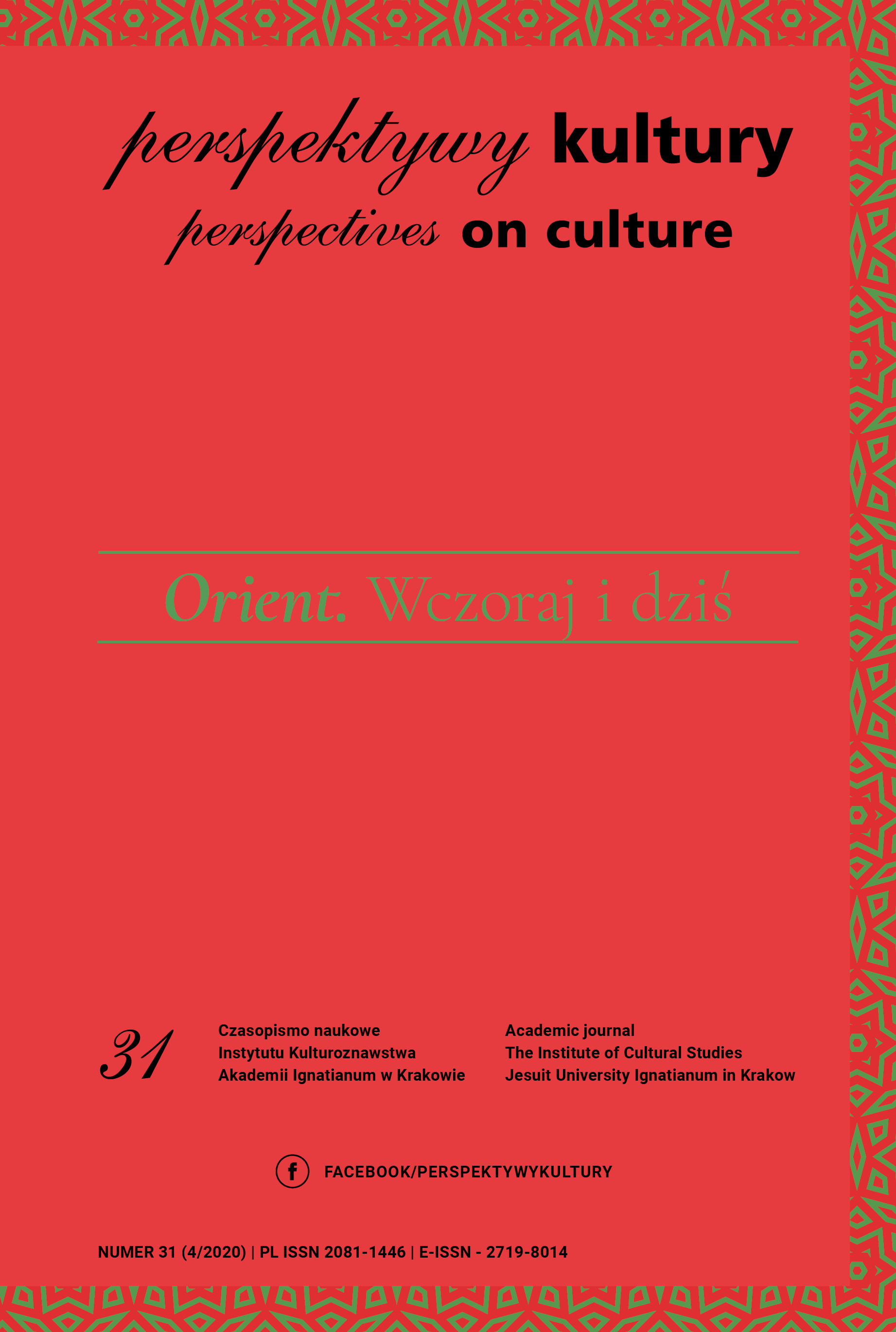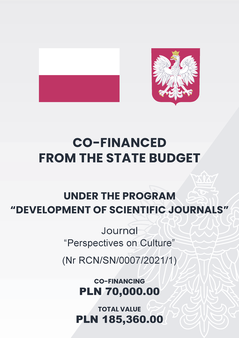From the Editors
Abstract
Silvestre de Sacy (1758–1838), a pioneer of Eastern Studies in Europe, supplied the European reader with many fundamental works about the Orient, in addition to translations, which are often still valid today. It was he who studied the Rosetta stone and interpreted the correspondence of Timur with the King of France, Charles VI. His accomplishments opened the mysterious and alluring Orient for Europe long before the publication of Orientalism (1978), the widely discussed book by Edward W. Said. From our present perspective, the impact of the Orient on the culture of Europe is very obvious. Hence the interest in this issue among the authors of papers contained in this issue of Perspectives on Culture, most of whom refer to the main theme, The Orient: Now and Then.
Copyright (c) 2020 Jesuit University Ignatianum in Krakow

This work is licensed under a Creative Commons Attribution-NoDerivatives 4.0 International License.
Autor, zgłaszając swój artykuł, wyraża zgodę na korzystanie przez Wydawnictwo Uniwersystet Ignatianum z utworu na następujących polach eksploatacji:
- utrwalania utworu w formie papierowej, a także na nośniku cyfrowym lub magnetycznym;
- zwielokrotnienia utworu dowolną techniką, bez ograniczenia ilości wydań i liczby egzemplarzy;
- rozpowszechniania utworu i jego zwielokrotnionych egzemplarzy na jakimkolwiek nośniku, w tym wprowadzenia do obrotu, sprzedaży, użyczenia, najmu;
- wprowadzenia utworu do pamięci komputera;
- rozpowszechniania utworu w sieciach informatycznych, w tym w sieci Internet;
- publicznego wykonania, wystawienia, wyświetlenia, odtworzenia oraz nadawania i reemitowania, a także publicznego udostępniania utworu w taki sposób, aby każdy mógł mieć do niego dostęp w miejscu i czasie przez siebie wybranym.
Wydawca zobowiązuje się szanować osobiste prawa autorskie do utworu.






